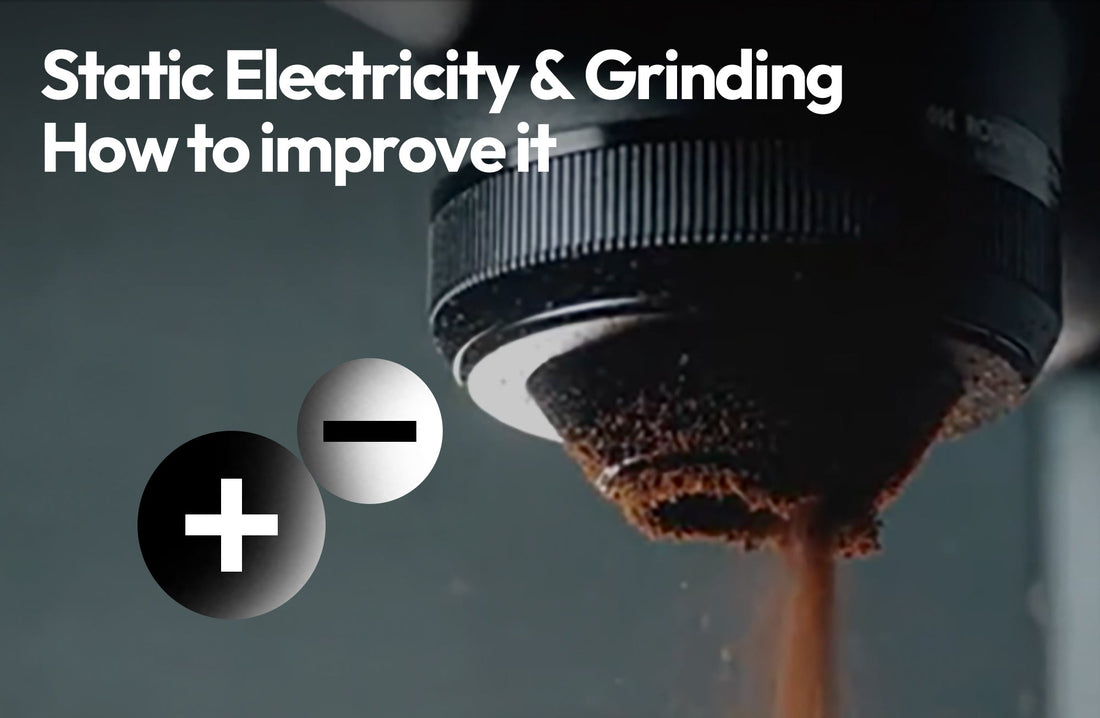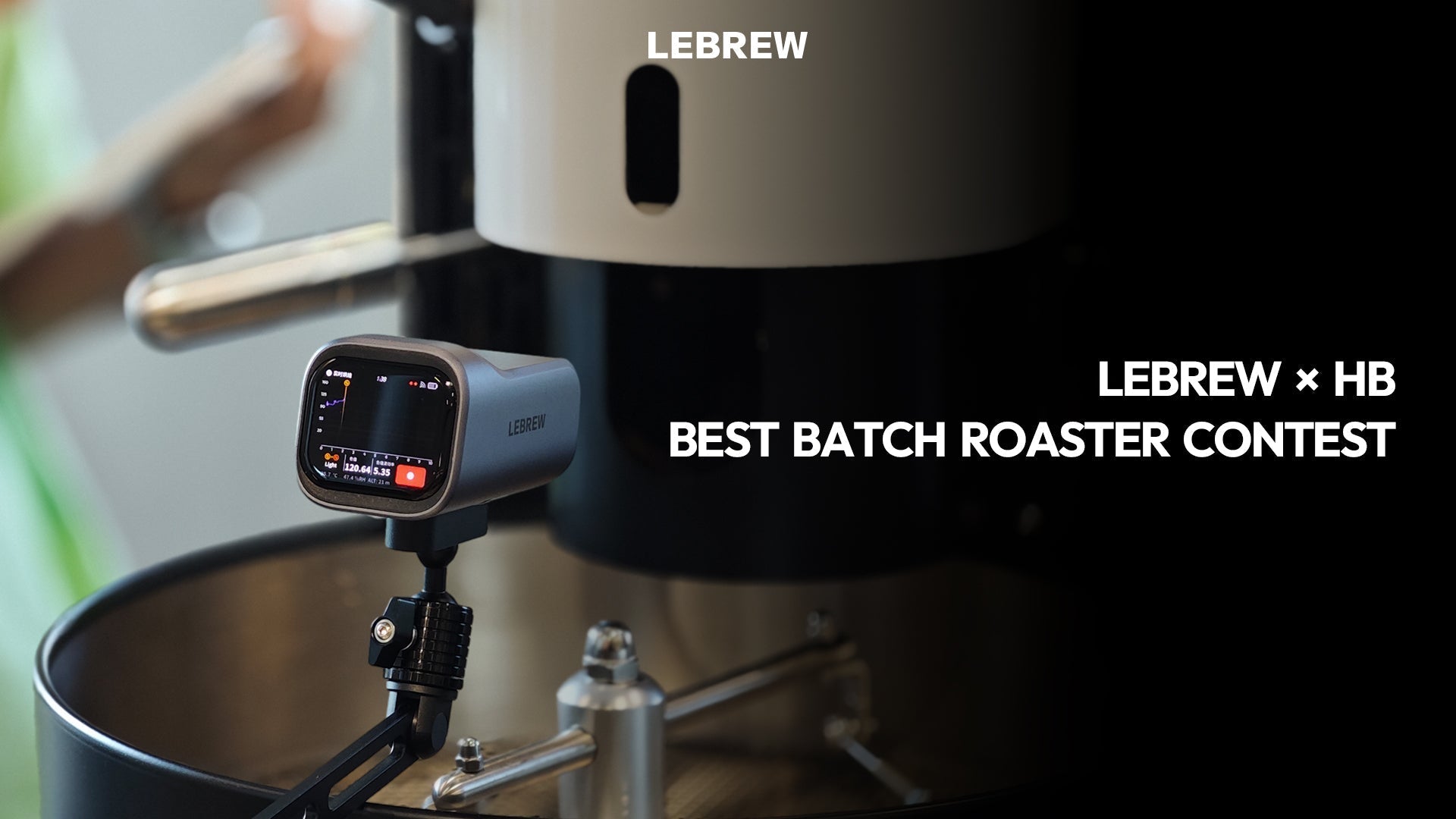Static Electricity and Grinding: How to Improve It?

Abstract
Coffee grinding is a crucial step in the coffee-making process, directly affecting the flavor and quality of the final brew. However, many coffee enthusiasts and professionals encounter a seemingly minor yet far-reaching issue during grinding—Static Electricity. This article delves into the causes of static electricity in coffee grinding, its impact on coffee quality, and effective strategies to mitigate it. Additionally, LEBREW HyperBurrs introduces a high-conductivity coating, ensuring a smoother grinding process, minimizing unwanted static, and achieving the best extraction results.
Table of content
1. The Basic Concept of Static Electricity
Static electricity refers to the phenomenon of charge imbalance on the surface of an object caused by the transfer of electrons. During the coffee grinding process, static electricity primarily manifests as coffee grounds adhering to the grinder, container, or surrounding environment. This accumulation of charge not only affects grinding efficiency but can also negatively impact the flavor of the coffee. There are many factors that influence the generation and reduction of static electricity, such as the presence of external plasma to neutralize the static, as shown in the diagram:

2. Causes of Static Electricity in Coffee Grinding
2.1 Friction Between Coffee Beans
During the grinding process, coffee beans are cut into small particles by the high-speed rotating burrs or blades. In this process, frequent contact and separation between the coffee beans and the equipment, as well as between the coffee beans themselves, generate a lot of friction. This continuous friction increases the opportunity for charge transfer, resulting in static electricity buildup.
2.2 Friction Between Coffee and Burrs
- Another source of friction that generates static electricity comes from the contact between the coffee beans and the burrs.
- Therefore, using conductive coatings or metal burrs can effectively guide charged particles into the casing, preventing the generation of static electricity.

3. The Impact of Static Electricity on Coffee Quality
3.1 Reduced Grinding Efficiency
Static electricity causes coffee grounds to stick to the burrs, the grinder’s interior, or external containers. When static attracts the grounds to the container and inside the grinder, freshly ground coffee may remain in the grinding path, reducing the actual amount of coffee ground and causing the coffee grounds to be re-ground. This affects both the consistency and efficiency of the grinding process.
3.2 Flavor Deterioration
- Static electricity can lead to some coffee grounds being over-ground or insufficiently ground, which impacts the aroma and taste of the final coffee.
- Additionally, static buildup may promote oxidation reactions, accelerating the aging of the coffee grounds and compromising their freshness and flavor.

4. How to Reduce Static Electricity in Coffee Grinding
4.1 Choose the Right Burr Material
Using burr materials with better conductivity, such as stainless steel or carbon steel, can effectively reduce static electricity buildup. These materials help dissipate charge quickly, reducing the occurrence of static electricity.

4.2 Control the Ambient Humidity
Studies on the relationship between static electricity and humidity show that the higher the absolute and relative humidity, the faster the dissipation (dissolution) of static electricity. This is believed to be because high humidity increases the conductivity of the material's surface, thereby accelerating the leakage of charge.
Grinding coffee in a relatively humid environment can reduce static electricity buildup by increasing the humidity of the air. Using a humidifier or placing a water tray in the grinding area are effective methods.
When an object is placed in an area with higher air moisture, its surface comes into contact with many water molecules. Since water conducts electricity, the object’s surface becomes more conductive if it is covered with moisture. In this state, grounding the object can discharge static electricity. Additionally, as moisture in the air increases, static electricity is naturally directed elsewhere through the water in the air. Therefore, humidity management is an effective strategy for creating an environment that is less prone to static electricity buildup.

The vertical axis (y) in the graph below is the scattering time (time constant) and the horizontal axis is the absolute humidity. The scattering time can be thought of as the time it takes for the static electricity to disappear, and the higher the absolute humidity, the less likely it is to become charged. It can therefore be said that it is very difficult for static electricity to build up relative to the degree of humidity increase.

4.3 Use of Antistatic Equipment
Some modern coffee grinders are equipped with antistatic technology, such as ionization systems or antistatic coatings. These technologies can effectively neutralize the static electricity generated during grinding and reduce the adhesion of coffee grounds.The use of plasma devices can neutralize static electricity, as shown in the diagram:

4.4 Use of Burrs with Conductive Coatings
Materials like nickel, copper, or aluminum have excellent conductivity, which allows them to efficiently transfer static electricity. However, since coffee burrs need to meet certain food safety regulations, we use food-grade conductive coatings, such as TiN or AlTlN. Using burrs with conductive coatings is an effective measure for controlling static electricity during coffee grinding. By enhancing the conductivity of the burrs, static charge can be effectively dissipated and neutralized, reducing the negative effects of static accumulation. Although initial costs may be slightly higher, the advantages in improving grinding quality, equipment safety, and long-term stability make it an important method for optimizing coffee grinding equipment. As technology develops, the performance and application range of conductive coatings will continue to expand, bringing further innovation and improvements to the coffee industry.

5. Conclusion
Static electricity is an issue that cannot be ignored in the coffee grinding process. It not only affects grinding efficiency but can also negatively impact the final flavor of the coffee. By choosing the right burr material, controlling the ambient humidity, using antistatic equipment, and regularly maintaining the grinding equipment, static electricity can be effectively reduced, improving both the grinding quality and the flavor experience. For coffee enthusiasts and professionals, understanding and addressing static electricity is an important step toward enhancing coffee-making skills.
The impact of static electricity in coffee grinding should not be underestimated. However, through scientific methods and the proper selection of equipment, we can minimize its negative effects. We hope this article helps coffee lovers and professionals better understand and address static electricity, leading to a more perfect coffee experience.
If you have any questions or suggestions regarding this article, feel free to contact us at: service@lebrewtech.com
References
[1] Zhu, J., Wang, H., & Liu, Q. (2023). Electrostatic effects in grinding and powder processing: A review of recent developments. Powder Technology , 407, 117659.
[2] Vasilenko, S., & Ivanov, M. (2023). Static electricity and its impact on powder handling in food processing. Food Control , 142, 108209.
[3] Kim, Y., Lee, S., & Choi, D. (2022). Influence of environmental humidity on electrostatic charge accumulation during grinding of coffee beans. Journal of Food Engineering , 326, 111126.
[4] Schmitt, T., & Hayashi, R. (2021). Static electricity in powder processing: Impact on product quality and control strategies. Advanced Powder Technology , 32(9), 3207-3216.



